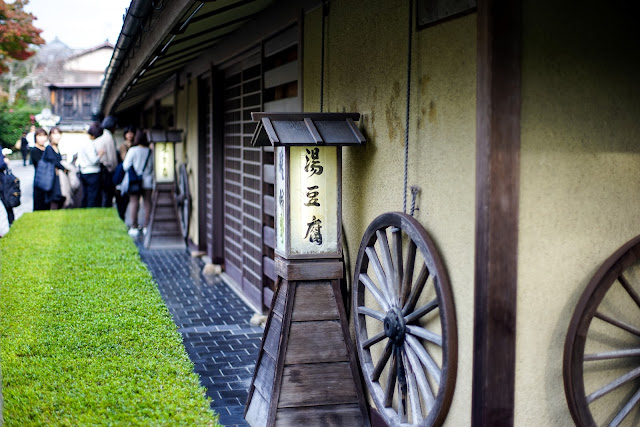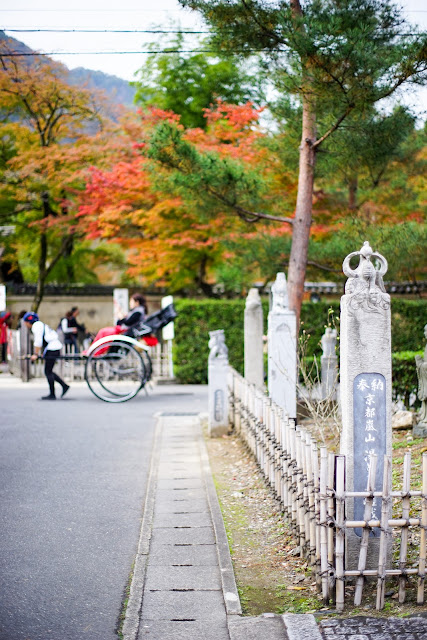嵐山(あらしやま) Arashiyama Mountain is located at the Western Kyoto (洛西). The mountain has been famous across Japan since ancient times, and the famous Ukiyoe (浮世絵) painter, Katsushika Hokusai (葛飾北斎), has one theme for Arashiyama together with the bridge, 渡月橋 (とげつきょう, the bridge name in the painting is 吐月橋 with the same pronunciation).
A little bit more about the painter, Hokusai. He actually traveled across Japan, and created lots of art pieces, among them there was a series, called 富嶽三十六景(ふがくさんじゅうろっけい), which contains 36 of paintings of different locations along the way from Tokyo to Kyoto. The paintings describe the scenery, lifestyle, traditions and etc, in Hokusai’s years. The awesome part is that the scenery of all locations are well preserved. The same buildings, bridges, mountains and etc are inherited from the ancient time. If you visit those locations and view them from the right angle, you will see the same thing as from the ancient paintings. I always wanted to have a bike trip from Tokyo to Kyoto, following the 36 painting’s trial, but haven’t made it yet.
Anyway, here’s the picture of the Arashiyama painting that I get from google. (This is not one of the 36 though.)

The current scenery has not changed much from the painting, if you view it from the same angle, but the painting is at spring coz the sakura trees are in blossom.
1 嵐山(あらしやま): Unfortunately, I didn’t manage to take a photo from the same angle as the painting. My photo only has the mountain, and no bridge. And my lens view angle is not as wide as the painting’s.

2 Monks at 渡月橋(togetsukyou). They’ll pray and chant for you when you donate.

3. 嵯峨野: Taking the rickshaw taxi in Kyoto is a special experience; the driver can take you to authentic places upon your request.

4. 嵯峨野:Tofu Restaurant, soup tofu is a famous dish in Kyoto, something you don’t wanna miss.

5. 嵯峨野:the queue outside the restaurant; and yes, I tried the tofu there. It tastes great, and worth queuing for 1 hour.

6. 嵯峨野









































